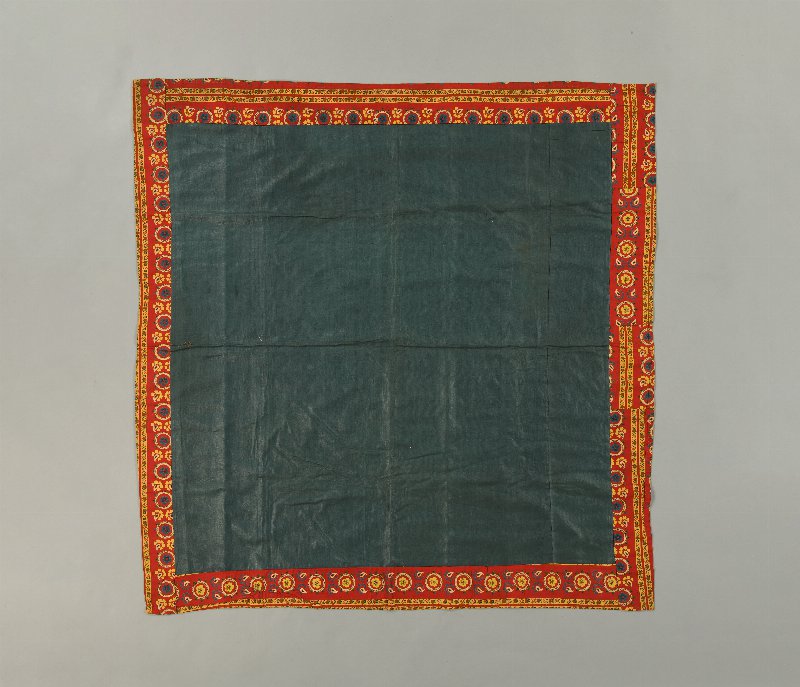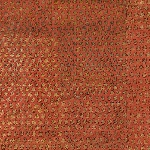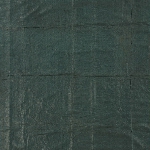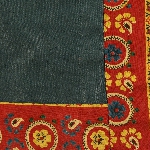| Native Name | Kinkhaub |
| Object Number | A583 |
| Current Location | Collections Storage |
| Culture | Indian | Persian |
| Provenience | India | Surat | Iran |
| Period | 19th Century |
| Date Made | 19th Century |
| Section | Asian |
| Materials | Cotton | Silk | Silver Thread |
| Technique | Brocade | Roller Printed | Dyed | Woven | Sewn |
| Iconography | Floral | Buta | Boteh |
| Description | Square cover of silk brocade woven with metal-wrapped thread. Field patterned with repeating tassel or feather motifs in gold, outlined in black, on a red ground. Border patterned with small repeating boteh (paisley) motifs in gold on dark blue ground. These silk brocades, called termeh when patterned with botehs, were a specialty of Kashan and Isfahan in Iran (Persia) dating back to at least the seventeenth century. Used primarily for luxury garments, they were often repurposed into decorative covers. This cover has been backed with navy blue silk twill and faced with roller-printed cotton. Related objects in the Penn Museum: A581, A584, A585, A587, A588, A590, A591, A592. |
| Length | 104 cm |
| Width | 99 cm |
| Credit Line | Purchased from F. P. Bhumgara & Company, 1904 |
Report problems and issues to digitalmedia@pennmuseum.org.






